There is nothing better than radishes when it comes to their crisp texture and slightly peppery taste. They make buttered toast more interesting, add a new flavor to tacos and ramen, and look appealing on vegetable trays.
The best radish types thrive in cool spring and fall weather, but not all. If you’re unsure which to plant, try these.
Growing Radishes for Spring
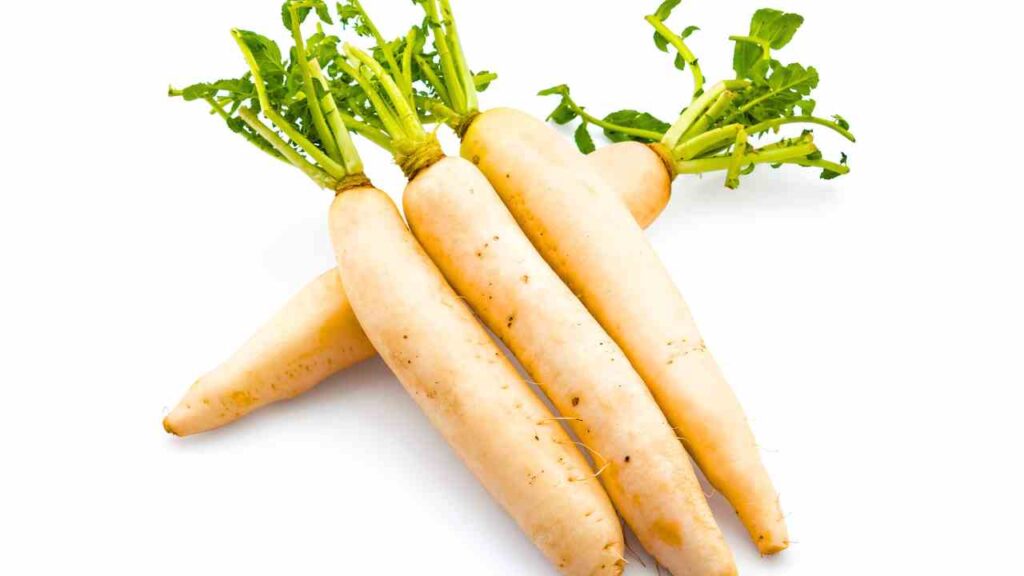
Radishes do very well when it’s cool outside in the spring. When the earth gets warm enough for the seeds to sprout, adorable little radish seedlings come up and start to grow.
Because these brassicas bolt when it gets hot, you need to put the seeds early so they can grow before the hot days come. But the seeds might not grow if you put them too early.
You can improve your chances of a successful crop by planting types that don’t take long to mature. The radish varieties below do well when planted in the spring. Radish varieties planted in the fall usually take longer to mature.
“Cherry Belle”
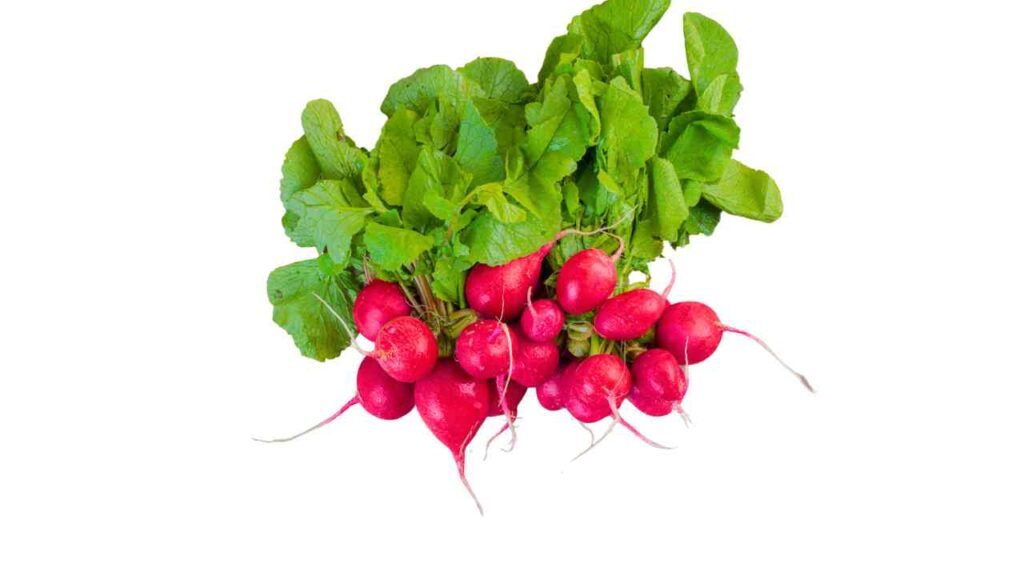
Its skin is bright red, and the inside is crisp, white, and slightly spicy.
“Cherry Belle,” a round, red radish that comes from The Netherlands, is a classic type. Its skin is bright red, and the inside is crisp, white, and slightly spicy. It’s an excellent option for children and individuals who are unsure about radishes due to its milder scent.
Additionally, you can pick “Cherry Belle” in as little as 24 days due to its rapid growth. If you plant something in early spring, it will take over a month to develop because it will grow more slowly on cool, dark days. You can plant more than one succession in the spring because they’re ready so fast.
You can pick the roots when they measure about an inch or an inch and a half across.
So, you can put seeds as little as an inch apart. If you allow the radish roots to grow too large, they may become soft and bitter.
‘French Breakfast’
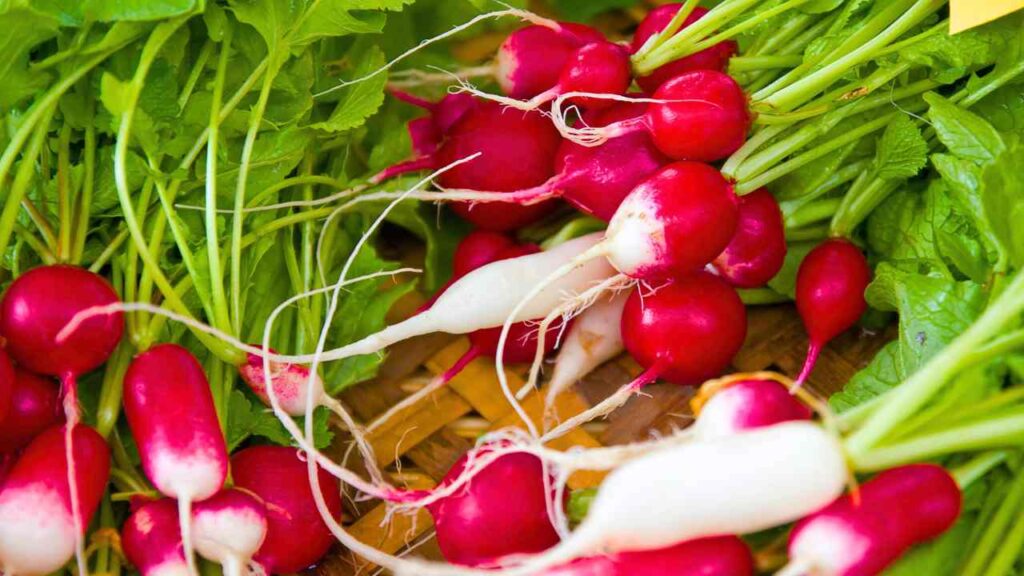
It also looks beautiful because the tips of its red leaves are white and the tops are red.
“French Breakfast” is a small, long radish that tastes delicious on buttered toast. It is a slightly peppery type. Its white tips and red tops make its roots beautiful.
Gardeners often pick roots one to two inches long, even though they can grow four inches. They stay less than an inch wide at all of these lengths. Plant the seeds about half an inch apart and about one centimeter deep to get long, straight roots.
“French Breakfast” radishes are ready to eat in late spring, after about 30 days. During shorter days, though, they may not be ready for harvest for about a month and a half. You can plant seeds consecutively for multiple crops.
‘Easter Egg Blend’
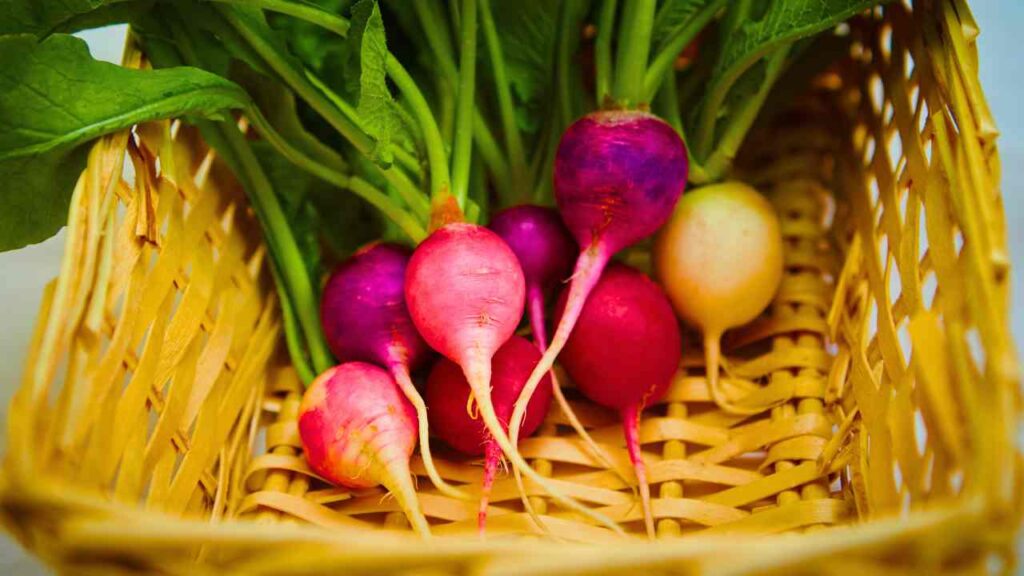
They stay small in all colors, which makes them ideal for raised beds and containers.
“Easter Egg Blend” is one of the best radishes for making your food look as delicious as it tastes. Its roots are a beautiful mix of red, pink, purple, and white. They stay small in all colors, which makes them ideal for raised beds and containers.
In as little as 30 days, they will be ready to pick. You can get fresh radishes all season long if you plant a new round of seeds every two weeks from the start of spring to the middle of it.
They won’t mind a few warm days, but when it’s consistently above 80°F (27°C), they’ll turn bitter and extra spicy.
Pick the roots when they are slightly larger than an inch across. They will get sour and/or sharp if you let them get very big.
‘White Icicle’
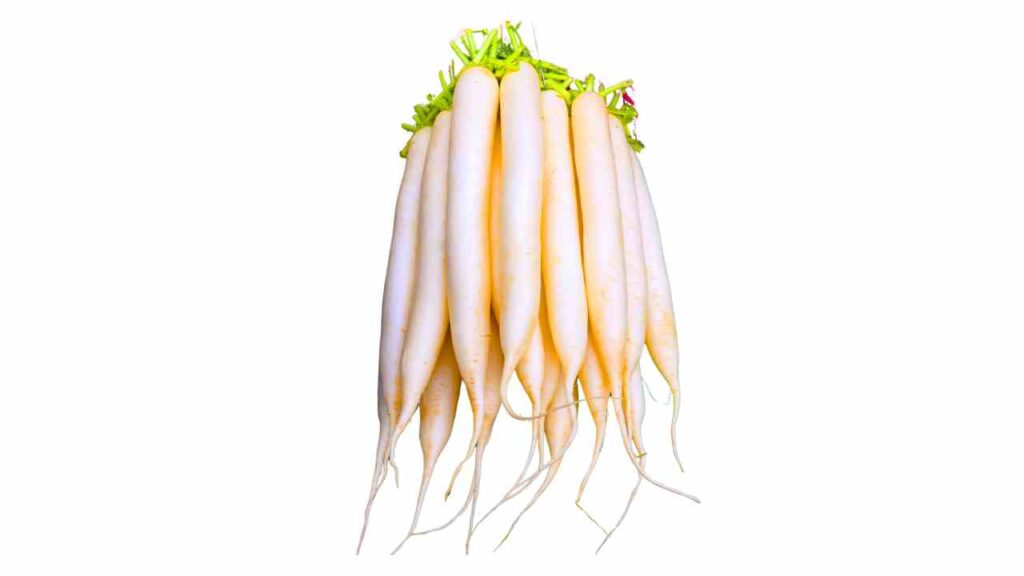
They keep their thin, pointy ends even when they get up to four inches long.
Most spring radishes are small and round, but “White Icicle” is more like a carrot because it is thin and long. So, if you want to plant something different from the usual types, this is a wonderful choice.
The roots keep their thin, pointy ends even as they grow up to four inches long.
In about 27 days, you can pick the “White Icicle” trees. Start cutting test plants around the time they’re ready for harvesting, as their length can be unpredictable. When you think the plants are big enough, you can pick the whole thing.
Their taste is a little spicy, and you can eat them raw or cooked. For something different, roast or sauté the roots.
Growing Radishes for Fall
Plants don’t bolt because the days get cooler as they grow.
In a way, choosing radish varieties in the fall is like choosing them in the spring. From long and warm to cool and short, the days go by slowly. Radish seeds sprout easily in late summer and early fall, but pests such as flea beetles, cabbage worms, and aphids are more likely to attack them.
The cooler fall days prevent plants from bolting. In fall, you can plant smaller radishes like in spring, but bigger ones take longer to grow. It will grow roots and keep well in the fridge all winter.
If stored properly, all of these types thrive in the fall and remain crisp for months.
‘Miyashige White Daikon’
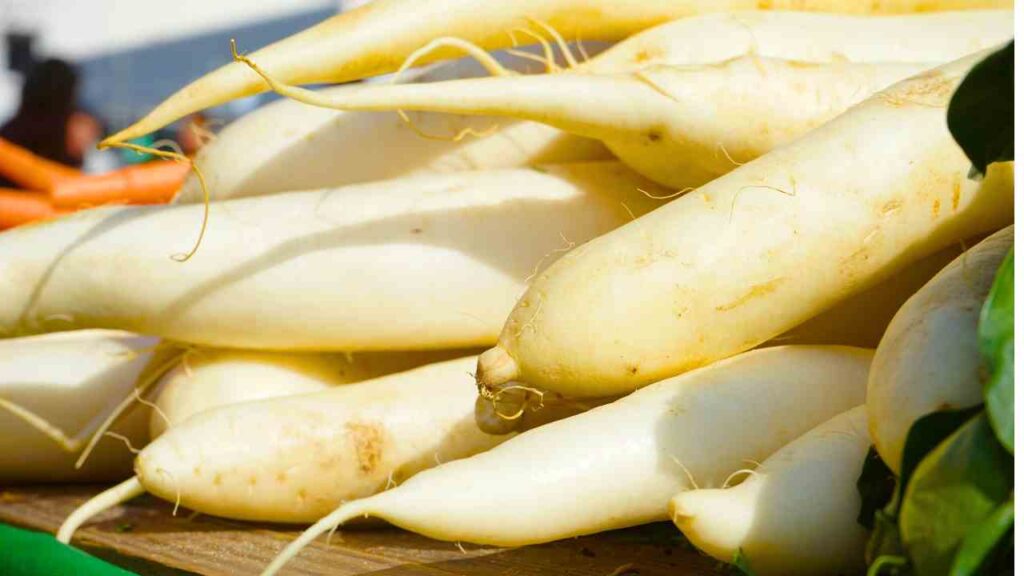
The roots of the “Miyashige White Daikon” plant are long and have white meat and skin.
People are aware of the variety of uses for daikons. You can eat them raw, let them ferment to make kimchi, or cook them in soups and stir-fries. Plus, their long roots help loosen up dense grounds and make it easier for water to move through and drain away.
The roots of the “Miyashige White Daikon” plant are long and have white meat and skin. The greens grow over a foot tall and can handle harsh conditions. The roots reach their peak when they measure 12 to 18 inches in length and 2 to 3 inches in width. This means that putting the seeds about three inches apart will give them enough space to grow.
Like many other large varieties, these daikons require shorter days to mature properly. As a result, they are great for planting in late summer. You can expect to gather the seeds in October if you plant them in the middle to end of August.
You don’t have to worry about getting the plants out of the yard before the first frost, though, because they can handle temperatures below freezing.
‘Mantanghong Watermelon’
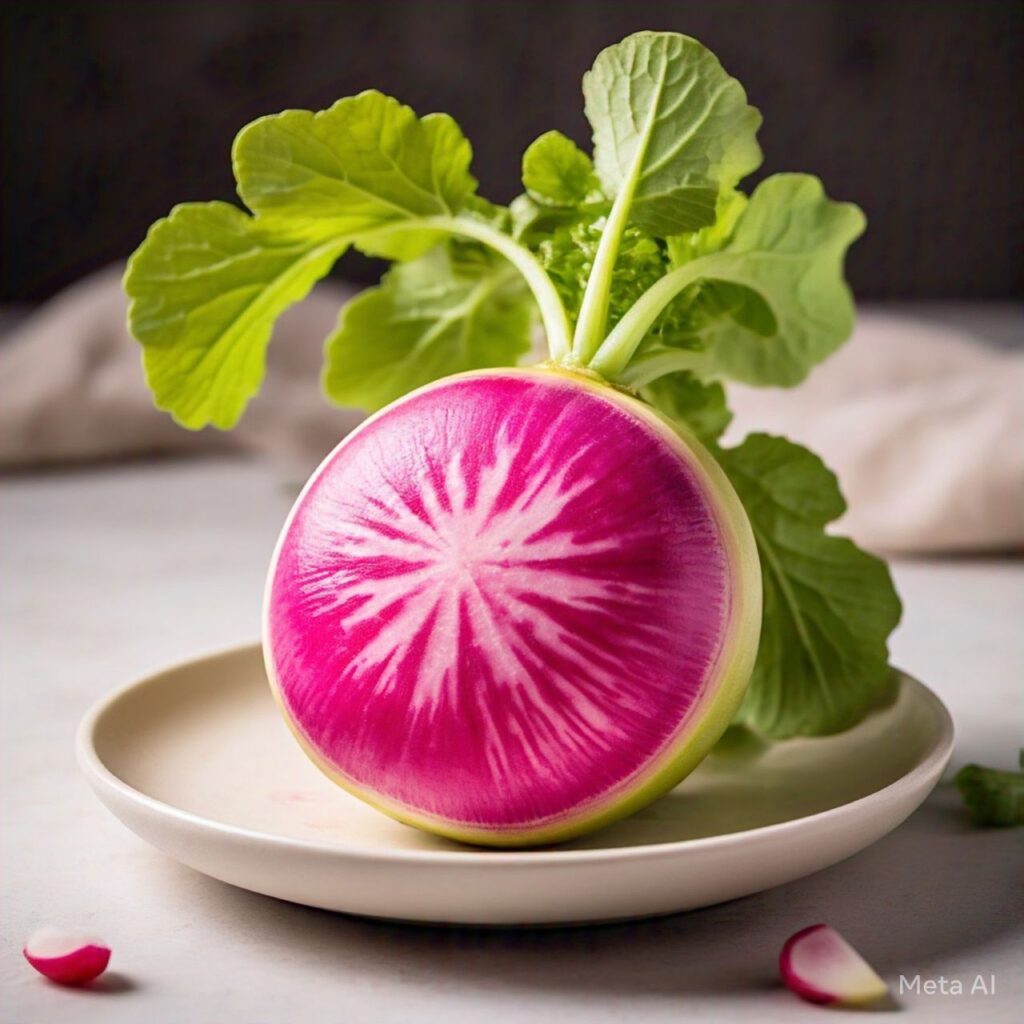
Watermelon types get their name from their bright pink inside and light green skin.
Radishes called watermelon get their name from the bright pink inside and light green outside.
The “Mantanghong Watermelon” is no different. Even when they’re three inches wide, they keep their round shape and stay crisp!
They mature in 65 days, making them ideal for fall planting. Planting the seeds in late summer lets the plants grow while the days get shorter in the fall. You don’t have to worry about cold weather either, since they can handle frost.
Despite their name, watermelon radishes are not sweet. Instead, they taste like pepper and are very crunchy.
“Round Black Spanish”
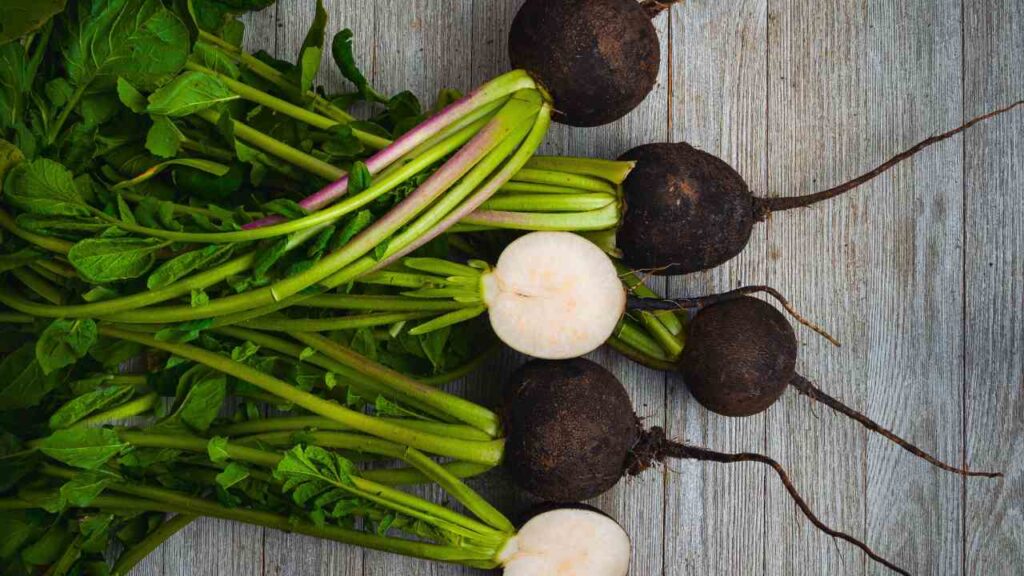
The “round black Spanish” radish has black skin and is round.
This variety is ideal for those who enjoy a spicy flavor. When eaten raw, it tastes very sharp, but when cooked, it tastes less sharp. To be exact, “Round Black Spanish” is a round radish with black skin. There is bright white meat inside the roots when you cut them open.
You can pick the roots when they are three to four inches across. It takes the plants about two months to grow up in the fall. Install them in late summer or early fall to give them time to grow before the days get short.
Make sure the seeds are far enough apart when you put them. Spread the seedlings out so they are three inches apart. This is a beneficial way to grow plants.
The “Green Luobo”
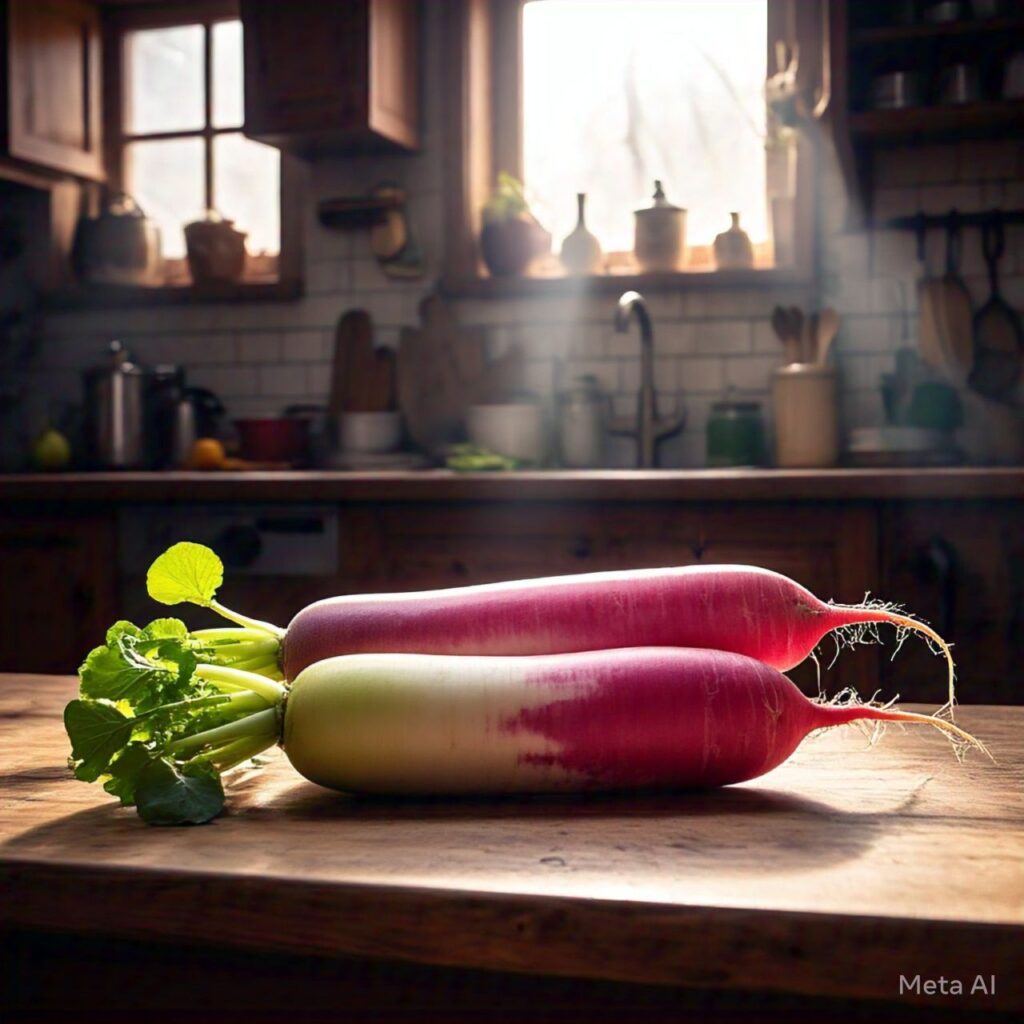
Its roots are a beautiful light green and yellow color.
“Green Luobo,” an Asian radish, has beautiful light green and yellow seeds. A lot of people use them to add bright color to kimchi because they keep their color when cooked and pickled. They also taste a little spicy, which makes them a tasty addition to many recipes.
Like most bigger types, “Green Luobo” grows best when the days get shorter in the fall. After planting in late summer, they take about 60 days to mature. The roots of the plants get long and thin, about six inches long and two inches wide. You can store the roots in the fridge for several months.

